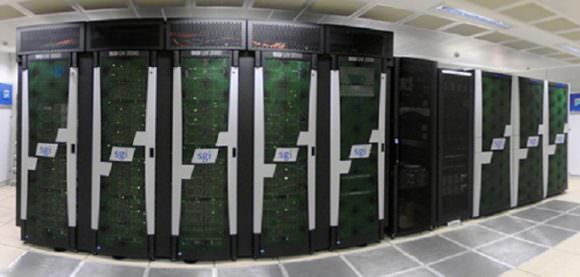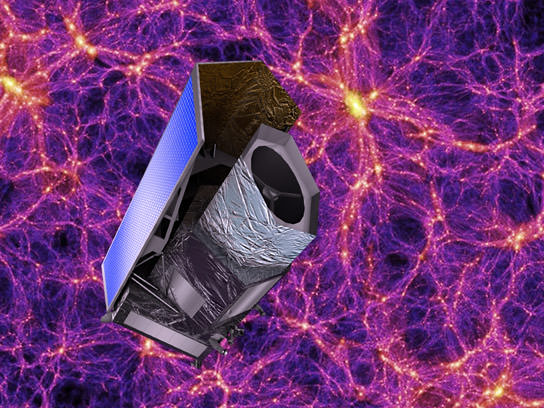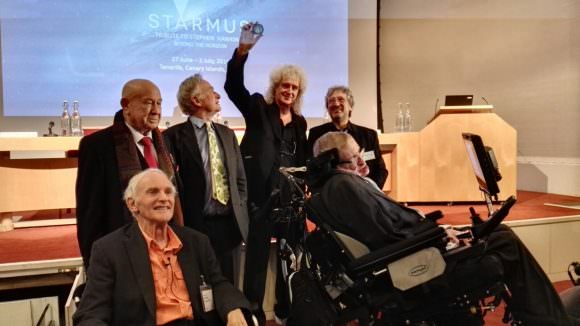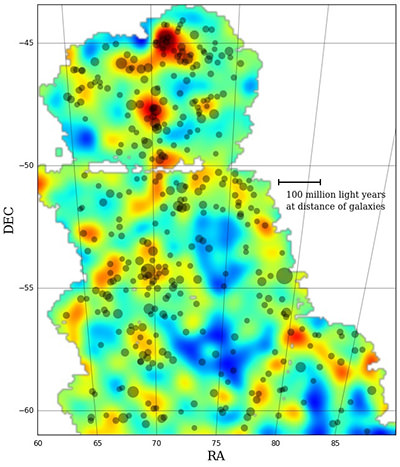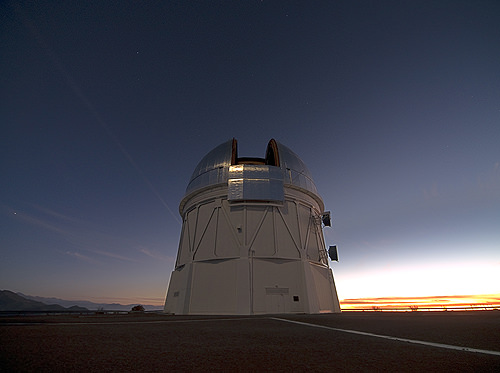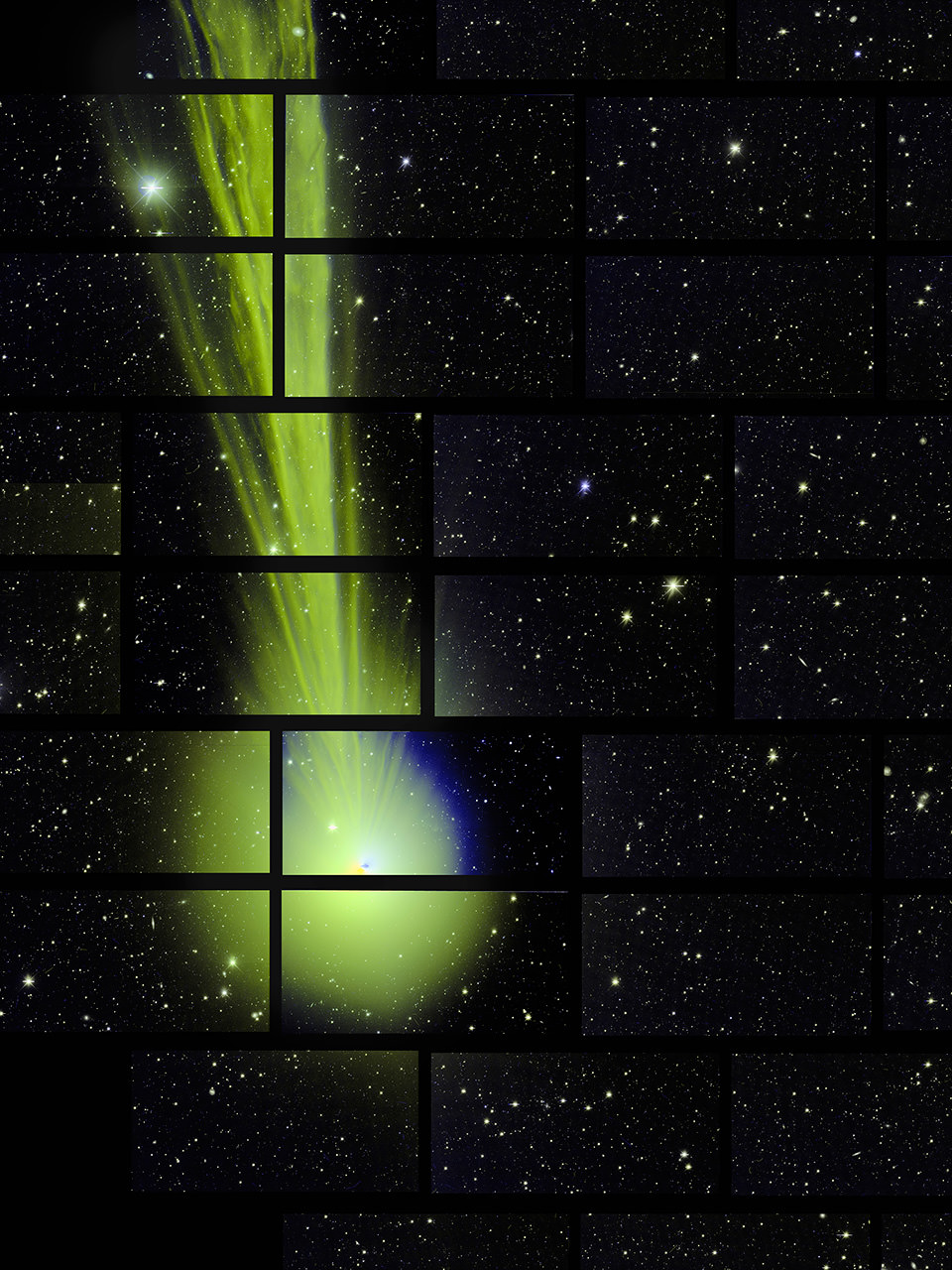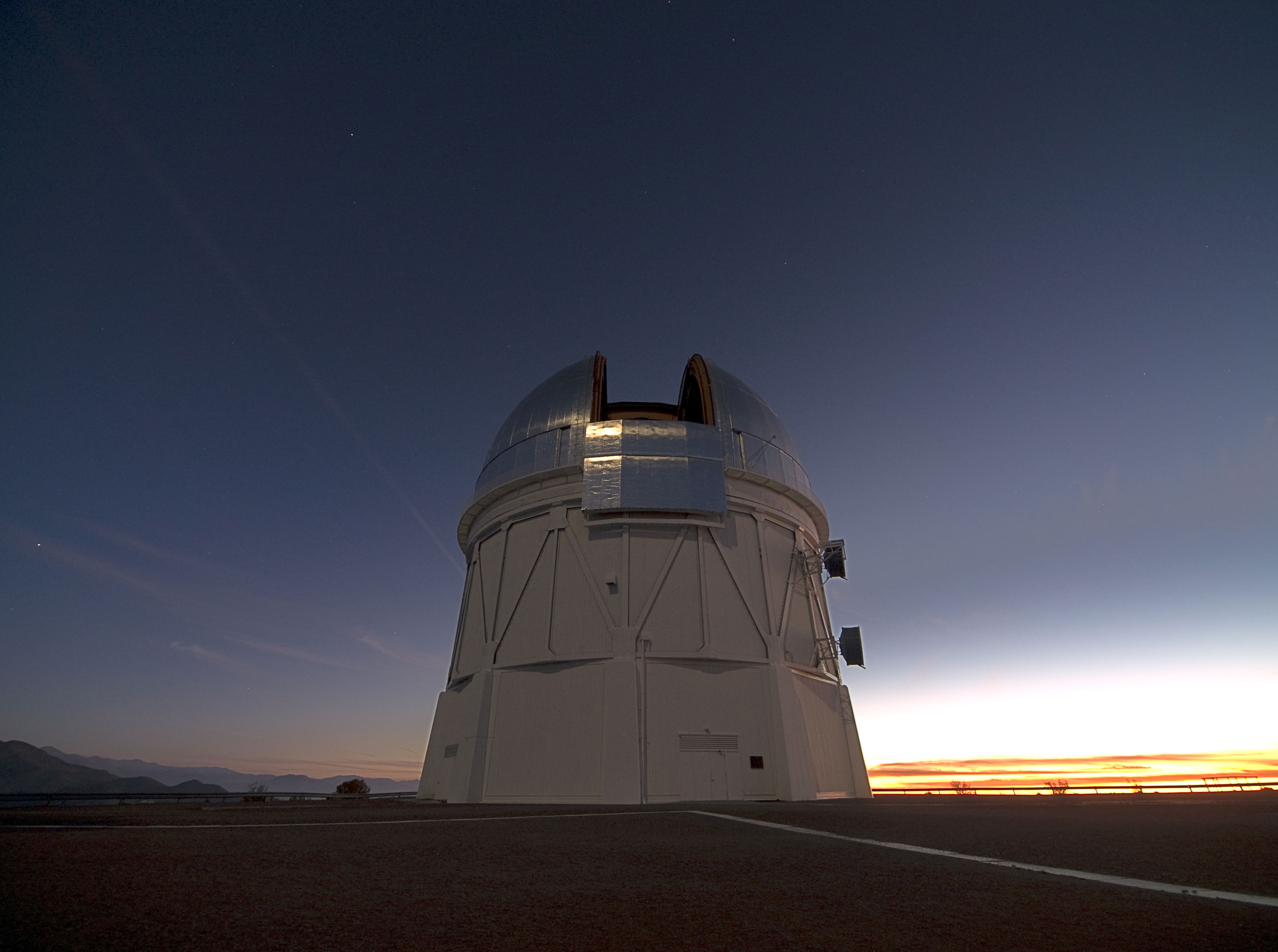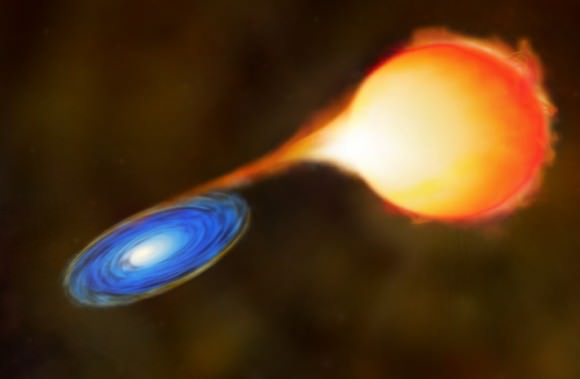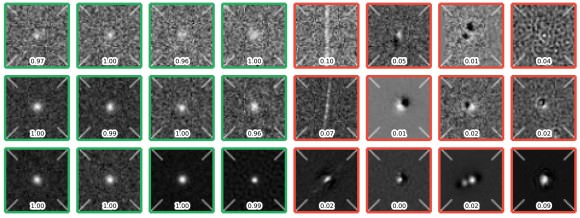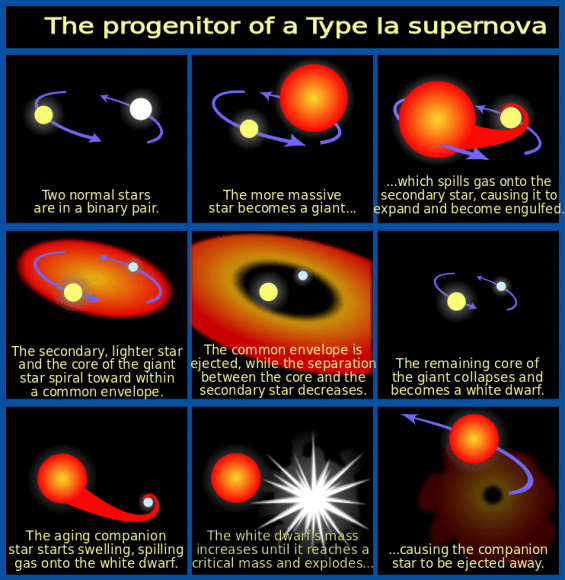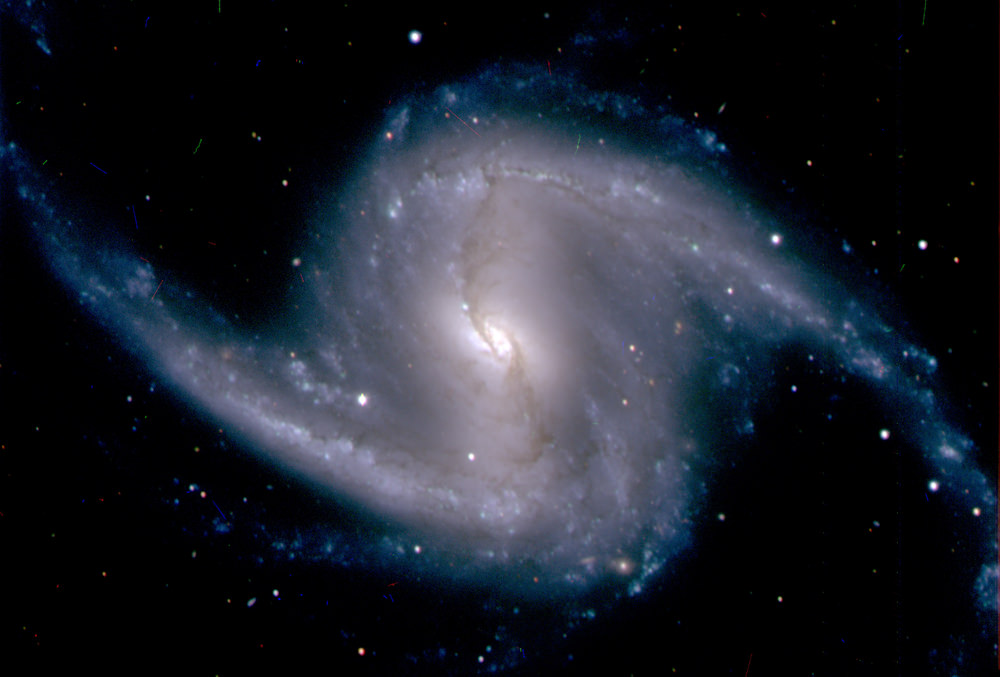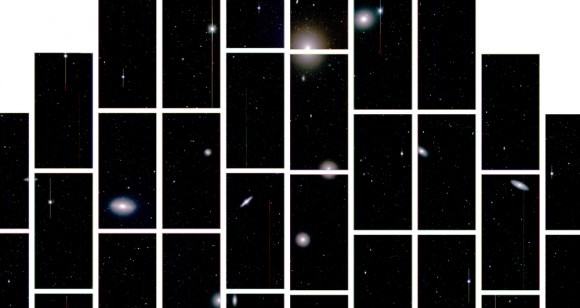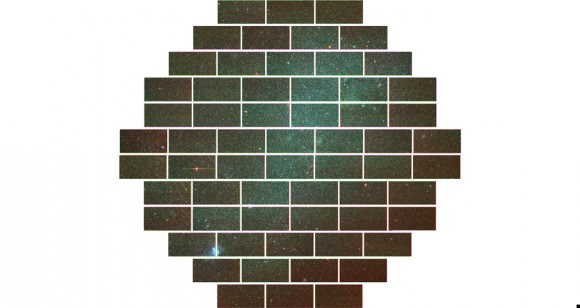Astronomers have discovered the most distant supernova yet, at a distance of 10.5 billion light years from Earth. The supernova, named DES16C2nm, is a cataclysmic explosion that signaled the end of a massive star some 10.5 billion years ago. Only now is the light reaching us. The team of astronomers behind the discovery have published their results in a new paper available at arXiv.
“…sometimes you just have to go out and look up to find something amazing.” – Dr. Bob Nichol, University of Portsmouth.
The supernova was discovered by astronomers involved with the Dark Energy Survey (DES), a collaboration of astronomers in different countries. The DES’s job is to map several hundred million galaxies, to help us find out more about dark energy. Dark Energy is the mysterious force that we think is causing the accelerated expansion of the Universe.
DES16C2nm was first detected in August 2016. Its distance and extreme brightness were confirmed in October that year with three of our most powerful telescopes – the Very Large Telescope and the Magellan Telescope in Chile, and the Keck Observatory, in Hawaii.
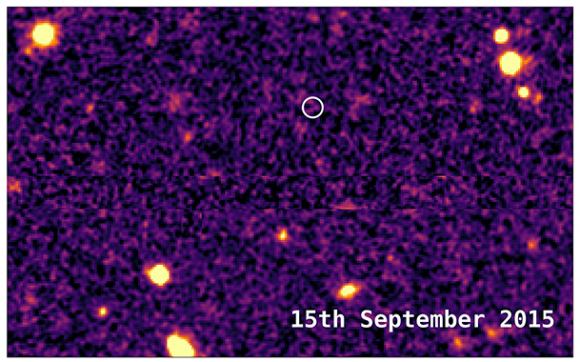
DES16C2nm is what’s known as a superluminous supernova (SLSN), a type of supernova only discovered 10 years ago. SLSNs are the rarest—and the brightest—type of supernova that we know of. After the supernova exploded, it left behind a neutron star, which is the densest type of object in the universe. The extreme brightness of SLSNs, which can be 100 times brighter than other supernovae, are thought to be caused by material falling into the neutron star.
“It’s thrilling to be part of the survey that has discovered the oldest known supernova.” – Dr Mathew Smith, lead author, University of Southampton
Lead author of the study Dr Mathew Smith, of the University of Southampton, said: “It’s thrilling to be part of the survey that has discovered the oldest known supernova. DES16C2nm is extremely distant, extremely bright, and extremely rare – not the sort of thing you stumble across every day as an astronomer.”
Dr. Smith went on to say that not only is the discovery exciting just for being so distant, ancient, and rare. It’s also providing insights into the cause of SLSNs: “The ultraviolet light from SLSN informs us of the amount of metal produced in the explosion and the temperature of the explosion itself, both of which are key to understanding what causes and drives these cosmic explosions.”
“Now we know how to find these objects at even greater distances, we are actively looking for more of them as part of the Dark Energy Survey.” – Co-author Mark Sullivan, University of Southampton.
Now that the international team behind the Dark Energy Survey has found one of the SLSNs, they want to find more. Co-author Mark Sullivan, also of the University of Southampton, said: “Finding more distant events, to determine the variety and sheer number of these events, is the next step. Now we know how to find these objects at even greater distances, we are actively looking for more of them as part of the Dark Energy Survey.”
The instrument used by DES is the newly constructed Dark Energy Camera (DECam), which is mounted on the Victor M. Blanco 4-meter Telescope at the Cerro Tololo Inter-American Observatory (CTIO) in the Chilean Andes. DECam is an extremely sensitive 570-megapixel digital camera designed and built just for the Dark Energy Survey.
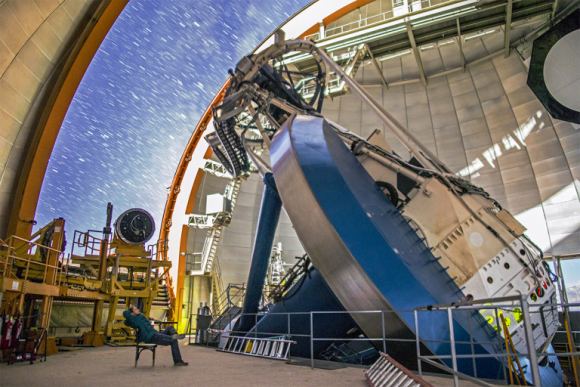
The Dark Energy Survey involves more than 400 scientists from over 40 international institutions. It began in 2013, and will wrap up its five year mission sometime in 2018. The DES is using 525 nights of observation to carry out a deep, wide-area survey to record information from 300 million galaxies that are billions of light-years from Earth. DES is designed to help us answer a burning question.
According to Einstein’s General Relativity Theory, gravity should be causing the expansion of the universe to slow down. And we thought it was, until 1998 when astronomers studying distant supernovae found that the opposite is true. For some reason, the expansion is speeding up. There are really only two ways of explaining this. Either the theory of General Relativity needs to be replaced, or a large portion of the universe—about 70%—consists of something exotic that we’re calling Dark Energy. And this Dark Energy exerts a force opposite to the attractive force exerted by “normal” matter, causing the expansion of the universe to accelerate.
“…sometimes you just have to go out and look up to find something amazing.” – Dr. Bob Nichol, University of Portsmouth.
To help answer this question, the DES is imaging 5,000 square degrees of the southern sky in five optical filters to obtain detailed information about each of the 300 million galaxies. A small amount of the survey time is also used to observe smaller patches of sky once a week or so, to discover and study thousands of supernovae and other astrophysical transients. And this is how DES16C2nm was discovered.
Study co-author Bob Nichol, Professor of Astrophysics and Director of the Institute of Cosmology and Gravitation at the University of Portsmouth, commented: “Such supernovae were not thought of when we started DES over a decade ago. Such discoveries show the importance of empirical science; sometimes you just have to go out and look up to find something amazing.”



